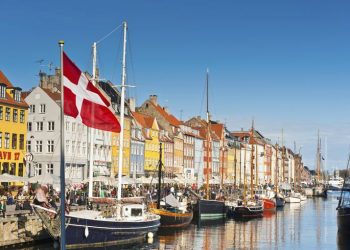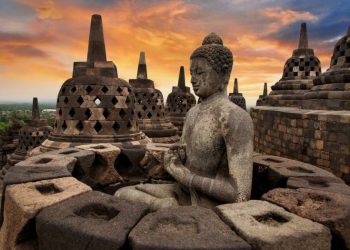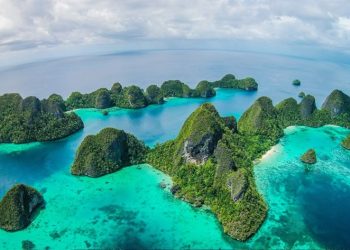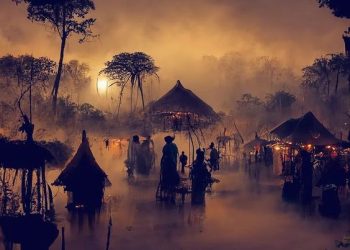Bandung, IndonesiaSentinel.com — Saranjana is a mythical city invisible to the naked eye, revealing itself only to those with supernatural sight. A city lived with modern civilization beyond the imagination of people. The legend of this mythical place has become part of the folklore coming from South Kalimantan.
The city was rumored to be located in the village of Oka-Oka, Pulau Laut District, Kotabaru Regency, South Kalimantan. According to the legend, those who manage to find their way to Saranjana often never want to return, captivated by the city’s greatness.
Saranjana city is depicted as a modern civilization, with advanced infrastructure and technology far surpassing what is found in the surrounding areas. Mysteriously, Saranjana was once marked on a map during the Dutch East Indies era, yet its presence is absent from Indonesian maps today, and no one really knows its exact whereabouts.
It is a place that exists in the collective memory of the people of Kalimantan, passed down through stories and folklore.
The Mysterious Tragedy of S.S. Ourang Medan
The existence of Saranjana has intrigued people far beyond Kalimantan when rumors have circulated on social media showing evidence of this unseen city being revealed. The city was captured on camera by a tourist while taking a photo at Mamake Hill, Sarang Tiung Village, located about 11 kilometers from Kotabaru, South Kalimantan.
A large and magnificent city is seen shining in the middle of the night, making people increasingly believe in the existence of this mysterious city.
The history of Saranjana City
The existence of Saranjana is considered a fact, according to the academic publication “Saranjana in Historical Record: The City’s Invisibility in Pulau Laut, South Kalimantan” by Mansyur.
Historical records reveal that in 1845, German naturalist Salomon Muller documented and depicted a location named “Tandjong Serandjana” on a map titled “Kaart van de Kust-en Binnenlanden van Banjermaing tot behoorende de zuidelijke Reize in het gedelte van Borneo,” a map of the coastal regions of Kalimantan.
Muller initially came to Kalimantan to conduct research on the wildlife and plants of the Indonesian archipelago. However, it is unclear whether Muller himself visited Tandjong Serandjana before creating the map.
A second reference to Saranjana comes from Pieter Johannes Veth’s “Aardijkskundig woordenboek van statistisch en Nederlandsch Indie: bewerkt naar de jongste en beste berigten,” where he mentions Sarandjana, a cape on the east side of South Pulau Laut, an island located at the southeastern tip of Kalimantan.
Up to this day, Saranjana city remains hidden from the map, never definitively found or confirmed. The people of Kalimantan believe that those who intentionally search for Saranjana are never meant to find it. This belief has become a widely accepted myth among the people.
The Myth of the Halimun Island Kingdom
A third version of the legend connects Saranjana to the myth of the Halimun Island Kingdom, ruled by King Pakurindang, who had two children: Sambu Batung and Sambu Ranjana. The legend says that Sambu Batung and Sambu Ranjana quarreled, leading King Pakurindang to divide his power between them.
The king granted Sambu Batung dominion over the human world, reincarnating as Mount Sebatung, while Sambu Ranjana was given control over a mystical realm, where he was to live and build the hidden city of Saranjana. Over time, the name Sambu Ranjana evolved into Saranjana, a term that now became the name of the mythical city.
Whether it is a real place unseen, a manifestation of collective memory, or simply a legend that has passed down through generations, the legend of Saranjana city continues to intrigue, inviting people to search for a city that may only exist in a world surrounded by myth.
Saranjana remains one of the greatest mysteries hidden somewhere in South Kalimantan, a city sought but may never be found.
(Raidi/Agung)

























